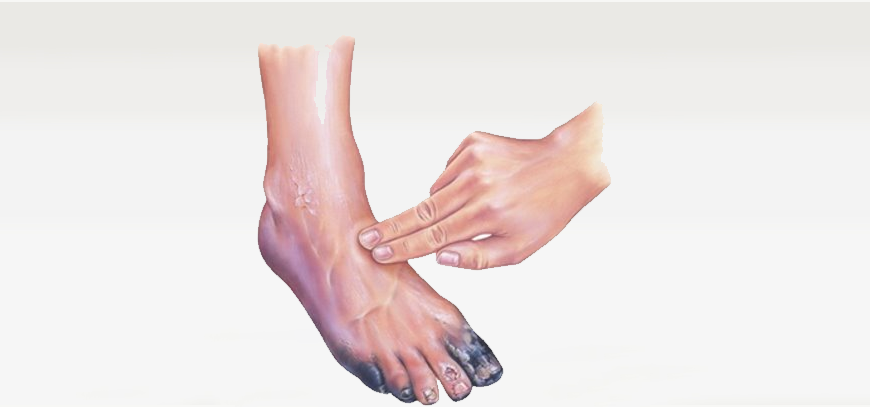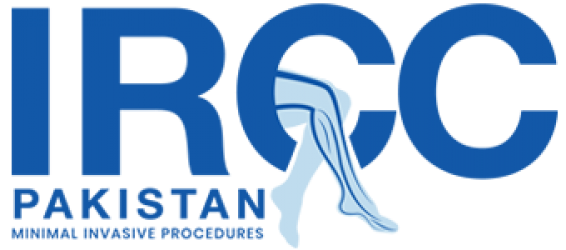Working Time
- Mon-Thu 08:00 – 20:00
Friday 07:00 – 22:00
Saturday 08:00 – 18:00
Contact Info
-
Phone: 92-3310232883
92-3310232883
Ask the Experts
Peripheral Vascular Disease

What is Peripheral Artery Disease (PAD)?
PAD is a circulatory disease in which blocked or stenotic arteries (narrowed) reduce blood flow to the extremities, most commonly, the legs and feet.
Arteries that supply blood to the legs can become narrowed over time due to fatty plaque buildup that blocks or restricts blood flow, making it painful to walk.
Peripheral artery disease (PAD), is a chronic, life-threatening circulatory condition.
What causes peripheral vascular disease?
The most common cause of PVD is atherosclerosis, the buildup of plaque inside the artery wall. Plaque reduces the amount of blood flow to the limbs. It also decreases the oxygen and nutrients available to the tissue. Blood clots may form on the artery walls, further decreasing the inner size of the blood vessel and block off major arteries.
Other causes of PVD may include:
-
- Injury to the arms or legs
- Irregular anatomy of muscles or ligaments
- Infection
People with coronary artery disease (CAD) often also have PVD.
Who is at risk for peripheral vascular disease?
A risk factor increases your chance of developing a disease. Some can be changed, others cannot.
Risk factors that you can’t change:
-
Age (especially older than age 50)
-
History of heart disease
-
Male gender
-
Postmenopausal women
-
Family history of high cholesterol, high blood pressure, or peripheral vascular disease
Risk factors that may be changed or treated include:
- Coronary artery disease
- Diabetes
- High cholesterol
- High blood pressure
- Overweight
- Physical inactivity
- Smoking or use of tobacco products
Those who smoke or have diabetes have the highest risk of complications from PVD because these risk factors also cause impaired blood flow.
What are the symptoms of peripheral vascular disease?
About half the people diagnosed with PVD are symptom free. For those with symptoms, the most common first symptom is painful leg cramping that occurs with exercise and is relieved by rest (intermittent claudication). During rest, the muscles need less blood flow, so the pain disappears. It may occur in one or both legs depending on the location of the clogged or narrowed artery.
Other symptoms of PVD may include:
-
Changes in the skin, including decreased skin temperature, or thin, brittle, shiny skin on the legs and feet
-
Weak pulses in the legs and the feet
-
Gangrene (dead tissue due to lack of blood flow)
-
Hair loss on the legs
-
Impotence
-
Wounds that won’t heal over pressure points, such as heels or ankles
-
Numbness, weakness, or heaviness in muscles
-
Pain (described as burning or aching) at rest, commonly in the toes and at night while lying flat
-
Paleness when the legs are elevated
-
Reddish-blue discoloration of the extremities
-
Restricted mobility
-
Severe pain when the artery is very narrow or blocked
-
Thickened, opaque toenails
The symptoms of PVD may look like other conditions. See your healthcare provider for a diagnosis.
How is peripheral vascular disease diagnosed?
Along with a complete medical history and physical exam, IRCC Pakistan is offering following non-invasive vascular investigations:
-
Ankle-brachial index (ABI)
-
Doppler ultrasound flow studies
-
Treadmill exercise test.
-
Photoplethysmography (PPG)
-
Pulse volume recording (PVR) waveform analysis
-
Segmental pressure
-
Reactive hyperemia test
-
Toe perfusion Index
-
Transcutaneous oxygen levels
-
Transcutaneous carbon dioxide levels
What is the treatment for peripheral vascular disease?
The main goals for treatment of PVD are to control the symptoms and halt the progression of the disease to lower the risk for heart attack, stroke, and other complications.
Treatment may include:
-
Lifestyle changes to control risk factors, including regular exercise, proper nutrition, and quitting smoking
-
Aggressive treatment of existing conditions that may worsen PVD, such as diabetes, high blood pressure, and high cholesterol
-
Medicines to improve blood flow, such as antiplatelet agents (blood thinners) and medicines that relax the blood vessel walls
Endovascular treatment offer at IRCC Pakistan
- Angioplasty — Interventional radiologist inserts a catheter (long hollow tube) to create a larger opening in an artery to increase blood flow. There are several types of angioplasty procedures, including:
- Balloon angioplasty (a small balloon is inflated inside the blocked artery to open the blocked area)
- Atherectomy (the blocked area inside the artery is “shaved” away by a tiny device on the end of a catheter)
- Laser angioplasty (a laser is used to “vaporize” the blockage in the artery)
- Stenting (a tiny coil is expanded inside the blocked artery to open the blocked area and is left in place to keep the artery open)
Benefits of Angioplasty, Stent Placement and Atherectomy
Using angioplasty, stent placement, or an atherectomy to treat PAD has many benefits, but, during any procedure there are risks. However, major complications are uncommon.
BENEFITS
- Performed under local anesthetic, not general anesthesia
- Outpatient setting, no hospital stay
- No incision needed, small skin nick doesn’t require stitches
- Quick return to normal activities
Peripheral Vascular Intervention & Amputation Prevention
If untreated, PAD can lead to critical limb ischemia (CLI), a condition frequently associated with lower limb amputations.
Increased access to interventions – including revascularization and atherectomy – has resulted in a reduction of lower extremity amputations for people with severe lower extremity PAD.
-
- Limb Preservation Leads To Long-Term Savings
- Limb Preservation Preserves Patient Quality Of Life
At IRCC Pakistan our interventional radiologist have the expertise and resources in many of our outpatient centers for the diagnosis, treatment and management of peripheral arterial disease. With our unique depth of training, diagnostic expertise and state-of-the-art imaging, we specialize in offering treatment plans for each individual PAD patient to ensure the best possible outcome. We are dedicated to providing an exceptional patient experience with a focus on superior patient care. This philosophy exists in all of our vascular centers throughout Pakistan. We offer several non-invasive or minimally invasive, outpatient procedures for those patients who have been referred for evaluation, or have been diagnosed with peripheral arterial disease (PAD).
If you are ready to consult with one of our interventional radiologists at IRCC Pakistan.We deliver far more than our patients expect. We bring our full range of medical capabilities and service excellence to every patient, every visit at each of our centers in Pakistan.

